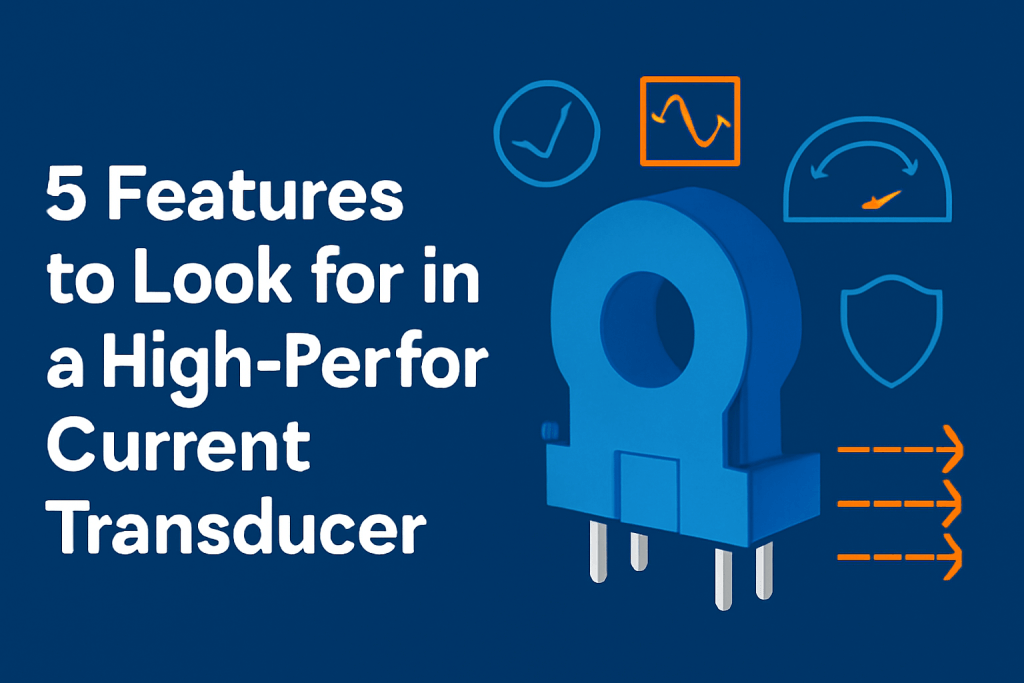When it comes to accurately measuring electrical currents in complex systems, a high-performance current transducer (CT) is an essential tool. These devices are used across various industries, including manufacturing, renewable energy, automotive, and electrical engineering, to measure and monitor the flow of current in circuits.
However, choosing the right current transducer can be a challenge given the wide variety of options available. To ensure you select the best device for your specific application, here are five key features to consider when evaluating high-performance current transducers.
Wide Measurement Range
One of the most important features to look for in a high-performance current transducer is its ability to handle a broad measurement range. The range of current that a transducer can measure directly influences the versatility of the device. Whether you are measuring very small currents in microampere (µA) ranges or large currents in the kiloampere (kA) range, it’s crucial that the current transducer can operate effectively across this spectrum.
For optimal performance, a high-quality CT should offer both low and high current sensitivity while maintaining accuracy throughout the measurement range. It is important to choose a transducer that not only accommodates the maximum current you expect but also delivers precise readings at lower currents. This ensures you get reliable and consistent data under a wide variety of operational conditions.
High Accuracy and Precision
Another key feature of a high-performance current transducer is its accuracy and precision. Transducers with high accuracy are vital for applications where even minor variations in current can have significant consequences, such as in power distribution networks, industrial machinery, or sensitive electronic equipment.
Accuracy in a current transducer is usually expressed as a percentage of the reading or as a fixed error margin. Look for transducers with minimal error margin, especially if your application involves high-precision processes such as laboratory experiments, medical equipment, or power monitoring systems. The higher the accuracy, the more reliable your measurements will be, ensuring optimal performance of the systems you’re monitoring.
Excellent Linear Response
A high-performance current transducer should exhibit a linear response throughout the entire measurement range. This means that the output signal must be directly proportional to the input current. In many applications, nonlinear behavior can lead to erroneous data, which may affect the efficiency or safety of your systems.
Linearity is particularly crucial when you need to interpret measurements for control systems or when integrating the current transducer with digital or analog monitoring equipment. A linear response guarantees that your transducer provides precise, predictable output, making it easier to interpret the results and take appropriate actions in real-time.
Fast Response Time
In dynamic environments, where electrical current can fluctuate rapidly, a current transducer’s response time becomes a critical feature. A transducer with a slow response time might lag behind rapid current changes, resulting in inaccurate or outdated readings.
For applications such as real-time monitoring, circuit protection, and dynamic load control, a fast response time is essential. The faster the transducer can detect and report current changes, the better equipped you will be to make timely adjustments to the system. Ideally, choose a current transducer with a fast transient response and low settling time to ensure you receive timely and accurate data.
Robust Construction and Durability
High-performance current transducers are often used in demanding environments, such as industrial machinery, renewable energy systems, or outdoor installations. In these settings, the transducer needs to withstand harsh conditions such as extreme temperatures, humidity, electrical noise, and mechanical stress.
Additionally, check for compliance with industry standards such as IP (Ingress Protection) ratings, which indicate the level of protection against dust and moisture. A high-quality transducer should be able to perform reliably in both indoor and outdoor environments.
Conclusion
When selecting a high-performance current transducer, it is essential to focus on features that ensure reliability, accuracy, and durability. By understanding these key features, you can confidently choose a current transducer that meets your operational needs, whether you’re monitoring industrial equipment, power grids, or renewable energy systems.
Cassia Rowley is the mastermind behind advertising at The Bad Pod. She blends creativity with strategy to make sure ads on our site do more than just show up—they spark interest and make connections. Cassia turns simple ad placements into engaging experiences that mesh seamlessly with our content, truly capturing the attention of our audience.


